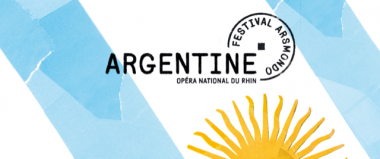
 France Festival Arsmondo Argentina [3] – Piazzolla, Gershwin: Trio, C’est pas si grave [Rafael Angster (bassoon), Thomas Kaufman (double bass), Cécile Steffanus (piano)], Auditorium of the Cité de la Musique et de la Danse, Strasbourg, 24 March 2019. (RP)
France Festival Arsmondo Argentina [3] – Piazzolla, Gershwin: Trio, C’est pas si grave [Rafael Angster (bassoon), Thomas Kaufman (double bass), Cécile Steffanus (piano)], Auditorium of the Cité de la Musique et de la Danse, Strasbourg, 24 March 2019. (RP)

© Atelier Marge Design
Piazzolla – Serie del ángel, Las cuatro estaciones porteñas
Gershwin – Porgy and Bess Suite
It was a lovely Sunday morning stroll from Strasbourg’s Cathedral, where my hotel was located, to the Cité de la Musique et de la Danse for this concert. There was even time to stop and watch a swan building her nest on the banks of the River Ill. The complex, which opened in 2006 and was designed by architect Henri Gaudin, is home to the Strasbourg Conservatory of Music. Arriving early, I found the 500-seat auditorium was practically empty, but by concert time there was hardly a seat to be had.
Three musicians from the Orchestre Philharmonique de Strasbourg – bassoonist Rafael Angster, Thomas Kaufman on the double bass and pianist Cécile Steffanus – make up Trio, C’est pas si grave (‘It’s not that bad’). In appearance and manner, they exude an aura of panache and laidback sophistication, which pretty much sums up their playing.
The music they chose, works of Argentinian composer Astor Piazzolla and American George Gershwin, was arranged by their OPS colleague, cellist Nicholas Hugan. All three works have their roots in popular music: inspirations for Piazzolla were the milonga and the tango, while for Gershwin it was the sounds of Tin Pan Alley and jazz.
Piazzolla’s Serie del ángel contains some of his most popular melodies. The first two movements, ‘Milonga del ángel’ and ‘Muerte del ángel’, were composed as stage music for the Alberto Rodriguez Muñoz play Tango del ángel, about an angel who appears in a Buenos Aires apartment block to cleanse the souls of its residents. ‘Ressurreción del ángel’ was composed later to create a concert suite and provide a more upbeat ending.
Hugan’s arrangements of the three movements exploited their contrasting moods. The beautiful melody of the opening milonga was exchanged seamlessly between the three instruments. The second movement is a three-part fugue that depicts the angel being attacked and killed in a knife fight. Kaufman in particular captured the raw, uncompromising spirit of the music with his incisive bass playing. Piazzolla composed the third tango specifically to provide a more soothing conclusion to the set. The soaring lines depicting the resurrection of the angel were beautifully and sensitively played by all three players.
From the start, Gershwin wanted the music of Porgy and Bess to be heard outside the opera house, and he incorporated its tunes into an orchestral suite in five movements, Catfish Row: Suite from Porgy and Bess. The suite wasn’t much of a success, but the songs have become ensconced as popular classics in the American Songbook and known the world over. Hugan arranged seven of the most popular ones for his Porgy and Bess Suite.
It came as a surprise to hear the languorous strains of ‘Summertime’ tossed about between the bassoon and double bass. (I would have assigned those high-flying melodies to the piano.) Nonetheless, in it, as throughout the set, Steffanus provided the energy, sparkle and rhythmic vitality of a full orchestra, and she spun out a lovely ‘Bess, you is my woman now’. If I had to pick a favorite of the Gershwin arrangements, it would have been ‘It ain’t necessarily so’, and Angster and Kaufman had a lot of fun tossing its jibes back and forth. What impressed me most was how Angster made the bassoon sing; it almost sounded human.
The four tangos that make up Piazzolla’s Cuatro estaciones porteñas were originally conceived as stand-alone pieces; he later scored them for his favorite combination of instruments, a quintet made up of bandoneón, violin, electric guitar, piano and double bass. He added a connection to Buenos Aires by including the adjective ‘porteño’ in the title, which is how natives of the city refer to themselves.
Hugan exploited the sonorities of the bassoon and double bass to capture the quicksilver changes of emotion and weather in the four seasons of the year, their sounds especially suited for the melancholy musical depiction of autumn. Summer was a spicy tango, while winter’s moods were captured with a rhythmic intensity and virtuosic solo passages, shared among the trio. Piazzolla’s take on the seasons ends with spring; in Buenos Aires a time of year overflowing with excitement and anticipation. Isn’t it everywhere?
Rick Perdian
For more information of Festival Arsmondo Argentina, click here.